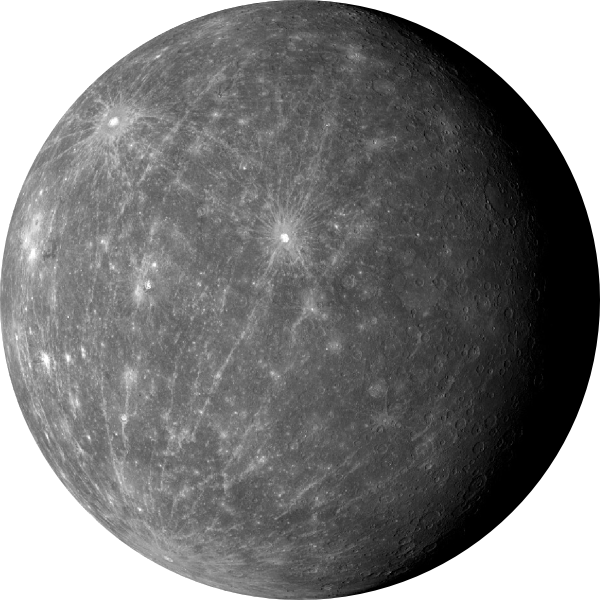Mercury


Planet Profile |
|
|---|---|
| Mass (kg) | 3.3 x 1023 |
| Diameter (km) | 4879.4 |
| Escape velocity (m/s) | 4300 |
| Average distance from Sun | 0.387 AU (57,909,175 km) |
| Rotation period (length of day in Earth days) | 58.65 |
| Revolution period (length of year in Earth days) | 87.97 |
| Obliquity (tilt of axis degrees) | 0 |
| Orbit inclination (degrees) | 7 |
| Mean surface temperature (K) | 452 |
| Maximum surface temperature (K) | 700 |
| Minimum surface temperature (K) | 100 |
| Largest known surface feature | Caloris Basin (1350 km diameter) |
| Atmospheric components | trace amounts of hydrogen and helium |
| Surface materials | basaltic and anorthositic rocks and regolith |